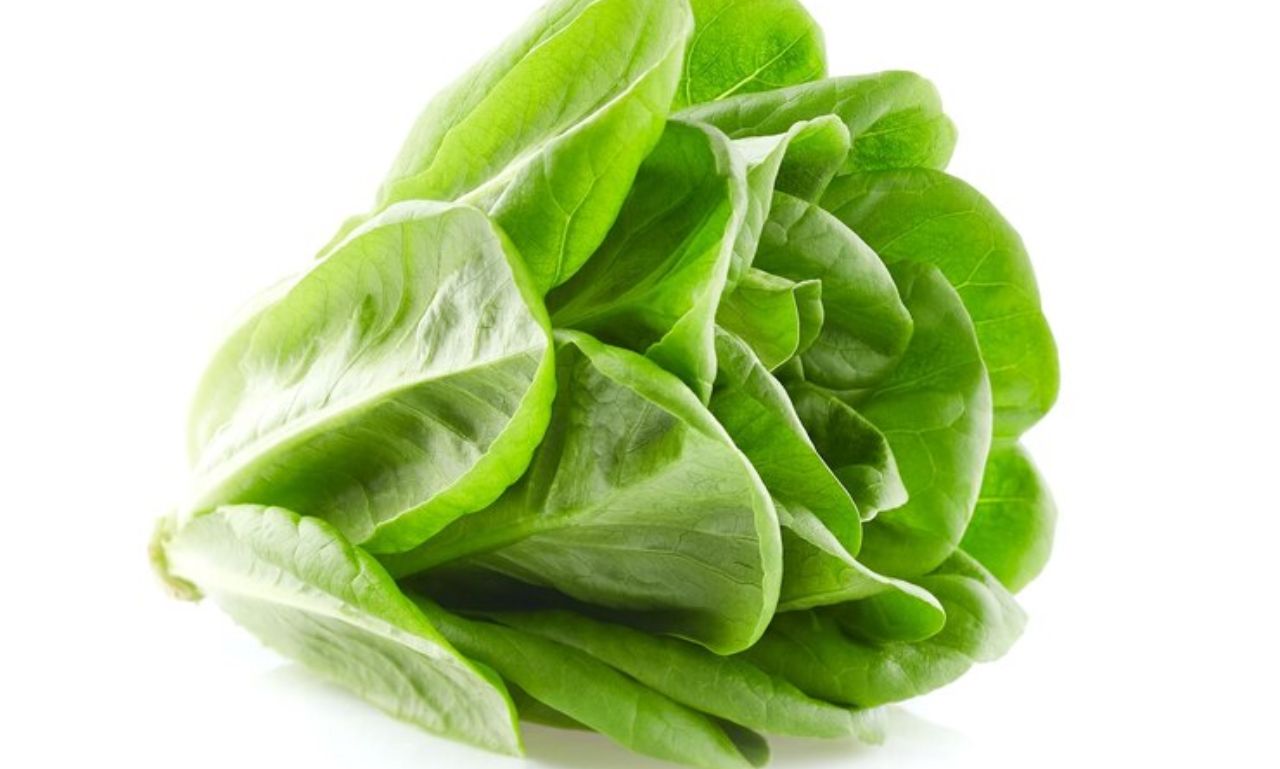Health & Gardening
Butterhead: 10 Key Facts and Benefits of This Tender Lettuce Variety

Butterhead lettuce, known for its soft, buttery texture and mild, sweet flavor, is a staple in many salads and wraps. As more individuals seek nutritious and easy-to-grow greens, butterhead is becoming an increasingly popular choice. This delicate lettuce variety not only enhances the taste and texture of your meals but also brings numerous health benefits to the table. In this comprehensive guide, we’ll explore everything you need to know about butterhead lettuce — from its origin and types to its health advantages and culinary uses.
What Is Butterhead Lettuce?
To begin with, butterhead lettuce is a type of leafy green that belongs to the Lactuca sativa species. Characterized by its loose, round heads and soft leaves, it differs from crisphead lettuce (like iceberg) by being far more tender and flavorful. The leaves are pliable and almost melt in your mouth — hence the name “butterhead.”
Two main subtypes exist:
-
Boston lettuce: Larger heads and softer leaves.
-
Bibb lettuce: Smaller heads with a more defined rosette shape.
Both types offer similar textures and tastes, though Bibb lettuce is often considered the more gourmet option due to its compact size and slightly sweeter taste.
Origins and History
Butterhead lettuce traces its origins to the Mediterranean region, where it has been cultivated for centuries. Over time, it spread to Europe and then the Americas, becoming a favorite among home gardeners and professional chefs alike. Historically, its soft leaves were appreciated not only for taste but also for their decorative appeal on dining tables.
Moreover, the rise of sustainable farming and organic gardening has given butterhead a renewed spotlight in recent years.
Nutritional Profile of Butterhead Lettuce
Undoubtedly, one of the biggest reasons for butterhead’s popularity lies in its impressive nutritional profile. Though light in calories, it’s rich in vitamins and minerals, making it a powerful food for maintaining health.
Key Nutrients Found in Butterhead:
-
Vitamin A – Essential for vision and immune function.
-
Vitamin K – Important for blood clotting and bone health.
-
Folate – Supports DNA synthesis and repair.
-
Iron – Helps transport oxygen throughout the body.
-
Potassium – Aids in muscle contractions and heart function.
-
Antioxidants – Includes beta-carotene and lutein for eye and skin health.
Despite its low caloric content (roughly 13 calories per 100g), butterhead delivers an array of nutrients that promote wellness.
Health Benefits of Butterhead Lettuce
Let’s delve deeper into the specific health benefits of consuming butterhead:
1. Supports Eye Health
First and foremost, butterhead lettuce is loaded with beta-carotene, which the body converts to vitamin A. This nutrient is crucial for good vision and may help prevent macular degeneration as you age.
2. Promotes Bone Strength
Thanks to its high vitamin K content, butterhead lettuce contributes to bone density and reduces the risk of osteoporosis. In fact, just one cup provides nearly 60% of the daily recommended intake.
3. Boosts Immunity
Because it contains a variety of antioxidants and immune-supporting vitamins, butterhead helps your body fight off infections more effectively.
4. Aids Digestion
Butterhead is an excellent source of fiber. Consequently, it can improve gut health and ease digestion, especially when consumed regularly.
5. Supports Heart Health
Due to its potassium and folate levels, butterhead helps regulate blood pressure and reduces homocysteine — a marker linked to heart disease.
Growing Butterhead Lettuce at Home
Now that you know the benefits, you may be wondering how to grow butter-head lettuce in your own garden. Fortunately, it’s one of the easier vegetables to cultivate, making it ideal for beginner gardeners.
Climate and Soil Requirements
Butterhead prefers cooler climates and thrives in well-draining, loamy soil. Although it can tolerate some heat, extreme temperatures can cause bolting (premature flowering), which makes the leaves bitter.
Planting Tips:
-
Spacing: Plant seeds or seedlings 6–8 inches apart.
-
Watering: Keep the soil consistently moist but not waterlogged.
-
Sunlight: Requires at least 4–6 hours of sunlight per day.
-
Harvest Time: Ready to harvest in 55–70 days after planting.
Importantly, you can also grow butter-head in containers, which makes it suitable for urban gardens or balcony spaces.
How to Harvest and Store Butterhead
When it comes to harvesting butter-head, timing is crucial. You want to pick it when the heads are firm but before the leaves begin to spread too much.
Steps for Harvesting:
-
Cut the entire head at the base using a sharp knife.
-
Alternatively, harvest individual leaves to allow continued growth.
-
Rinse gently to remove any dirt or insects.
After harvesting, store the lettuce in the refrigerator in a sealed bag or container. To extend freshness, wrap the leaves in a paper towel to absorb moisture. Under optimal conditions, butterhead can last up to a week.
Culinary Uses of Butterhead Lettuce
Butter-head’s soft, pliable leaves make it ideal for a variety of culinary applications. Because it doesn’t overpower other flavors, it serves as a versatile base or wrap in many dishes.
Popular Ways to Use Butterhead:
-
Salads: Pair it with vinaigrettes, fruits, nuts, and cheeses.
-
Wraps: Use it instead of tortillas for low-carb options.
-
Sandwiches: Adds a gentle crunch and fresh flavor.
-
Garnishes: Ideal for adding a pop of green on plates.
-
Smoothies: Surprisingly, it can be blended into green drinks for added nutrients.
Furthermore, butter-head works well with both savory and sweet ingredients, making it a chef’s favorite in experimental cuisines.
Comparing Butterhead to Other Lettuce Varieties
It’s important to understand how butterhead stacks up against other common types of lettuce, particularly romaine, iceberg, and leaf lettuce.
| Feature | Butterhead | Romaine | Iceberg | Leaf Lettuce |
|---|---|---|---|---|
| Texture | Soft, buttery | Crisp, hearty | Very crunchy | Delicate, varied |
| Flavor | Mild, slightly sweet | Slightly bitter | Neutral | Earthy, mild |
| Nutrient Density | High | High | Low | Moderate |
| Culinary Flexibility | Very versatile | Good | Limited | Good |
Clearly, butter-head offers a unique balance of taste and texture that sets it apart from its more mainstream counterparts.
Potential Downsides to Consider
While butterhead is highly nutritious and delicious, there are a few considerations to keep in mind:
-
Short Shelf Life: Due to its soft leaves, it wilts faster than other lettuces.
-
Susceptibility to Pests: More prone to aphid and slug attacks in the garden.
-
Lower Crunch Factor: Not ideal if you’re looking for a strong crunch, like that of romaine or iceberg.
Nevertheless, these minor drawbacks are easily outweighed by its many benefits and versatility.
Butterhead in Global Cuisines
Though often associated with Western dishes, butter-head lettuce has found its way into many international cuisines.
-
Vietnamese: Used in spring rolls and lettuce wraps.
-
Korean: Paired with grilled meats in “ssam” (lettuce wraps).
-
French: Featured in “Salade Verte,” a simple green salad.
-
Middle Eastern: Combined with herbs in mezze platters.
As global cuisine continues to influence modern cooking trends, butter-head’s soft yet sturdy leaves make it a go-to choice for fusion recipes.
Organic and Hydroponic Butterhead: A Modern Twist
In the era of sustainable agriculture, butter-head lettuce is now being grown organically and hydroponically. This method eliminates the need for pesticides and reduces water usage.
Benefits of Hydroponic Butterhead:
-
Cleaner Produce: Grown without soil, reducing contamination risks.
-
Faster Growth: Controlled environments lead to quicker yields.
-
Space Efficiency: Ideal for vertical farming and urban setups.
As a result, more restaurants and grocery stores are sourcing hydroponically grown butterhead for fresher, cleaner meals.
Fun Facts About Butterhead Lettuce
To lighten things up, here are some interesting tidbits about butter you might not know:
-
Lettuce is 95% water, and butter retains moisture longer than other leafy greens.
-
NASA grows butterhead in space as part of their Veggie program.
-
Bibb lettuce was named after John Bibb, a Kentucky lawyer who developed the variety in the 1800s.
-
Butterhead flowers attract pollinators, making it great for biodiverse gardens.
-
Lettuce soup made with butterhead is a delicacy in French cuisine.
Conclusion: Is Butterhead Worth It?
In conclusion, butterhead lettuce offers a harmonious blend of flavor, texture, and nutrition. Its buttery softness makes it stand out among leafy greens, while its rich nutrient content supports a variety of health goals. Whether you’re a home cook, a health enthusiast, or a gardener, butter-head is undoubtedly a valuable addition to your plate and garden.
From aiding digestion to enhancing your salads, butter-head proves that something as simple as lettuce can indeed be exceptional. So next time you’re at the market or planting in your garden, give butterhead a second look — your taste buds and body will thank you.

-

 Business7 months ago
Business7 months agoCoyyn.com Economy | Insights on Gig & Digital Economies
-

 Reviews7 months ago
Reviews7 months agoDelta Touch Faucet Reviews – (Buying Guide 2025)
-
Reviews7 months ago
Kraus Faucet Reviews – (Buying Guide 2025)
-
Reviews7 months ago
Pfister Faucet Reviews – (Buying Guide 2025)
-

 Reviews7 months ago
Reviews7 months agoGlacier Bay Faucet Reviews
-
Reviews7 months ago
Brizo Kitchen Faucet Reviews – (Buying Guide 2025)
-
Reviews7 months ago
American Standard Colony Soft Pull-Down Review
-
Reviews7 months ago
Grohe Faucet Reviews – (Buying Guide 2025)